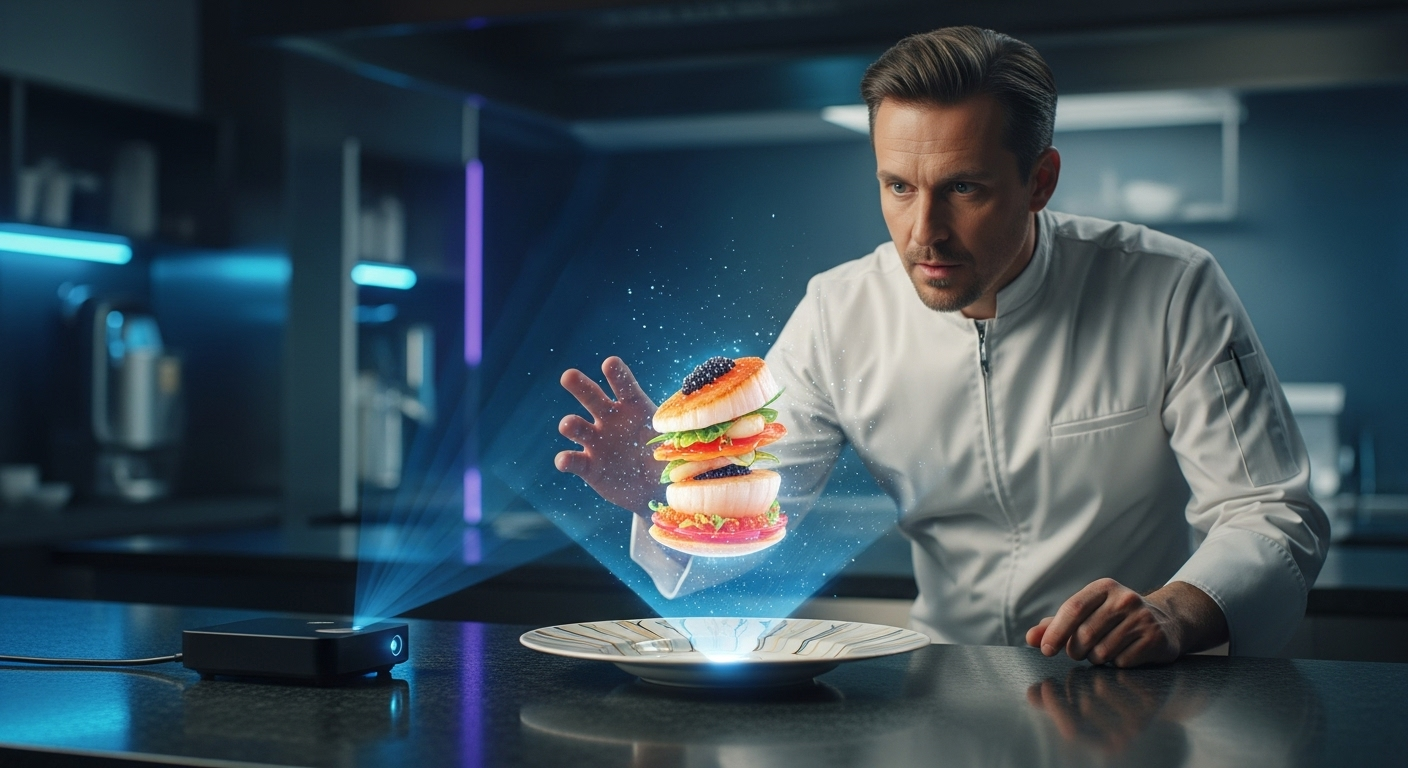Holographic Cuisine: Redefining Gastronomy Through Technology
In the ever-evolving realm of culinary arts, a groundbreaking fusion of technology and cuisine is reshaping the dining experience. Holographic cuisine, a cutting-edge concept blending virtual reality with gastronomy, is captivating food enthusiasts and tech aficionados alike. This innovative approach to dining promises to revolutionize how we perceive, interact with, and ultimately consume our meals, offering a multi-sensory journey that transcends traditional culinary boundaries.

Crafting Visual Feasts
At the heart of holographic cuisine lies the art of visual presentation. Chefs utilize high-definition projectors and specialized software to overlay intricate, dynamic images onto plates and dining surfaces. These projections can range from animated garnishes that dance across the plate to entire landscapes that transform the table into a living canvas. The visual element not only enhances the aesthetic appeal but also plays a crucial role in flavor perception and overall enjoyment.
Sensory Synchronization
Holographic dining experiences go beyond visual spectacle, incorporating auditory and olfactory elements to create a fully immersive environment. Custom-designed soundscapes complement the visual projections, while scent diffusers release carefully curated aromas that enhance the flavors of each dish. This multisensory approach aims to trigger emotional responses and memories, deepening the connection between diner and dish.
The Technology Behind the Magic
The technical infrastructure supporting holographic cuisine is a marvel in itself. Advanced projection systems with high luminosity and precision are essential for creating vivid, stable images on various surfaces. Motion tracking technology ensures that projections remain aligned with moving plates and utensils, maintaining the illusion throughout the meal. Specialized software coordinates the visual, auditory, and olfactory elements, synchronizing them with the rhythm of service.
Culinary Creativity Unleashed
Holographic cuisine opens up new avenues for culinary expression, allowing chefs to tell stories and evoke emotions through their creations in unprecedented ways. A seafood dish might be accompanied by projections of crashing waves and the sounds of seagulls, transporting diners to a coastal setting. Desserts could feature interactive elements, where touching the plate triggers visual effects or reveals hidden flavors. This technology empowers chefs to craft narrative-driven dining experiences that engage guests on multiple levels.
Challenges and Considerations
While holographic cuisine presents exciting possibilities, it also faces challenges. The high cost of equipment and the technical expertise required can limit widespread adoption. Critics argue that the technology might overshadow the food itself, potentially distracting from the core culinary experience. Additionally, concerns about the environmental impact of energy-intensive projection systems have been raised, prompting developers to explore more sustainable solutions.
The Future of Dining
As holographic cuisine continues to evolve, its potential applications extend beyond high-end restaurants. Educational institutions are exploring its use in culinary training, allowing students to visualize complex techniques and ingredient interactions. The technology also holds promise for nutritional therapy, helping individuals with eating disorders or sensory processing issues by creating controlled, customizable dining environments.
Cultural Impact and Artistic Expression
Holographic cuisine is not just a technological novelty; it represents a new form of artistic expression that blends culinary skill with digital artistry. This fusion is giving rise to a new category of culinary professionals who are as adept with projection mapping software as they are with kitchen knives. The cultural impact of this trend extends to how we perceive food presentation, with social media platforms adapting to showcase these dynamic, multi-dimensional culinary creations.
Ethical and Philosophical Implications
The advent of holographic cuisine raises intriguing philosophical questions about the nature of dining and the role of technology in our most fundamental experiences. It challenges our perceptions of authenticity in food, blurring the lines between reality and illusion. Ethicists and food critics debate whether such technologically enhanced meals detract from the purity of culinary tradition or represent a natural evolution of gastronomic art.
Conclusion
Holographic cuisine stands at the forefront of culinary innovation, promising to transform dining into an immersive, multisensory adventure. As the technology matures and becomes more accessible, it has the potential to redefine not just high-end gastronomy but also everyday eating experiences. While challenges remain, the fusion of culinary art and cutting-edge technology opens up exciting possibilities for creative expression, sensory exploration, and the future of food itself. As we move forward, holographic cuisine may well become a defining feature of 21st-century gastronomy, forever changing how we perceive, enjoy, and interact with our food.





